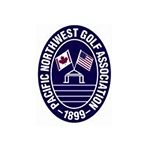Rule of the Month: Do Drops
With just a few tournaments completed under the 2019 Rules, it is apparent that drop procedures and relief areas continue to be a major source of confusion among players. The changes in the Rules are meant to simplify the process by minimizing the times when a golfer is required to re-drop, thus speeding up the pace of play. However, the confusion around the drops are slowing the pace as golfers take extra time to insure they are proceeding correctly. Over time the new procedure will become second nature and the pace of play will increase considerably when taking relief.

This month we hope to relieve some of the confusion on the course by challenging you with the following questions regarding dropping a ball when taking relief.
Questions: True / False
- There is a specific posture the player must take when dropping.
- If a player drops from shoulder height, the mistake may be corrected before making a stroke at the ball with no penalty.
- A player may substitute a ball every time he or she drops even when taking free relief or when the original ball is easily retrievable.
- A relief area where the player must drop a ball is either one or two club-lengths from the reference point determined by the Rule and option being used.
- The ball, when dropped, must be dropped in a specific relief area and come to rest in the same relief area.
- When dropping in a dropping zone, the ball may come to rest outside the dropping zone but must be within two club-lengths of where it first hit the ground.
- A player measured a relief area by laying a club on the ground and did not pick the club up. The ball, when dropped, hits the ground and then is accidentally deflected by the club, but comes to rest in the relief area. The player is required to re-drop since it struck a piece of his or her equipment.
- When a correctly dropped ball comes to rest outside the relief area, it must be dropped again and there is no limit to the number of times it must be re-dropped.
- Starting in 2019, a player never has to drop as near as possible to any specific spot.
- There are only two times under the Rules where a two club-length relief area may be measured.
Answers:
- False. Rule 14.3. Previously, a player was required to drop the ball from shoulder height and at arm’s length away from the body while standing erect. All of the requirements pertaining to the posture of the player have been removed and the ball must simply be dropped from knee height of the player, measured when standing. This does not require the player to be standing when dropping the ball. It is just a measurement of the distance the ball must fall.
- True. Rule 14.5. When a ball has been dropped in a wrong way, the player may lift the ball and correct the error. However, this is allowed only before the ball is played. If the player played the ball from the relief area without correcting the improper drop, the player would get one penalty stroke as it is too late to correct the error.
- True. Rule 6.3b. Allowing the player to substitute a ball whenever dropping will greatly reduce confusion on the course. Previously, the player wasn’t allowed to substitute a ball when dropping under certain Rules. Now a different ball may be used for every drop. Even when a dropped ball has come to rest outside the relief area and must be re-dropped.
- True. See definition of Relief Area. Every relief Rule option, whether free relief or penalty relief, will have a reference point of which the relief area will be measured from. Generally, the relief area will be one club-length. However, there are two times when the relief area will be measured using two club-lengths. See question #10 for further explanation.
- True. Rule 14.3. The ball must hit the ground in the relief area and come to rest in the same relief area. The requirement to measure if the ball rolled more than two club-lengths from where it hit the ground has been removed and the ball simply must come to rest in the relief area as measured. Keep in mind that the likelihood that a ball will roll far enough to require a re-drop has been greatly reduced by the fact that the drop is only from knee height.
- False. As stated in the answer to question #5, a player is never required to measure if the ball rolled more than two club-lengths from where it hit the ground when dropped. Under the Local Rule for dropping zones (DZ), the ball must be dropped in and come to rest in the DZ, as the entire DZ is the relief area.
- False. Rule 14.3c. If a dropped ball accidentally hits any person, equipment or any other outside influence after it hits the ground, there is no penalty and the ball is played as it lies provided it has come to rest in the relief area. If the dropped ball was deliberately touched by the player, he or she gets the general penalty, which is two penalty strokes in stroke play.
- False. Rule 14.3c(2). When a correctly dropped ball comes to rest outside the relief area, the player must drop a ball again in the same relief area. If the second dropped ball also comes to rest outside the relief area, the player is required to place a ball on the spot where the second drop hit the ground. The player may not continue to drop an unlimited number of times. This procedure is commonly referred to as the “drop, drop, place” procedure. One major change this year is that the player may change balls with each drop and even when placing the ball in this scenario.
- True. Previously, certain Rules required a player to drop as near as possible to a specific spot, such as when the player was taking relief for an embedded ball. Now that a reference point is used to measure a relief area, the requirement to drop as near as possible to a spot has been removed. For instance, when taking relief for an embedded ball, the reference point is a spot directly behind the ball and the player is required to drop within one club-length of that spot but no closer to the hole.
- True. Rules 17 and 19. While almost every relief area will be measured with one club-length, there are two exceptions and both come with one penalty stroke. The first is when a player takes lateral relief for a ball that is in a red penalty area, the reference point is where the ball last crossed the edge of the penalty area and the player is allowed to drop a ball within two club-lengths of that spot and not nearer the hole than that spot. The second is if a player has decided to treat his or her ball as unplayable and chooses the option to drop a ball within two club-lengths of the reference point but not nearer the hole. In this case, the reference point is the spot of the original ball.
click here to Print the questions click here to print the answers








